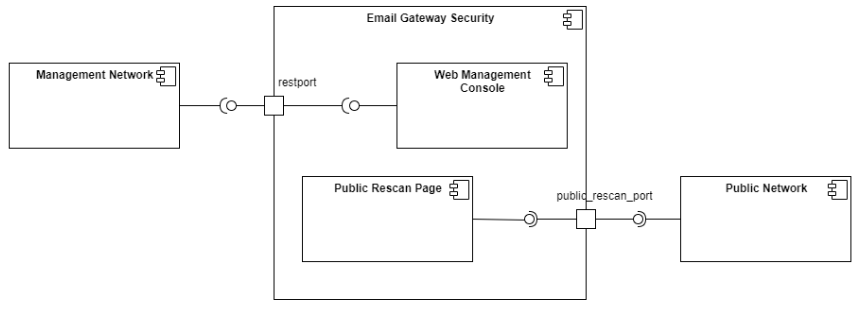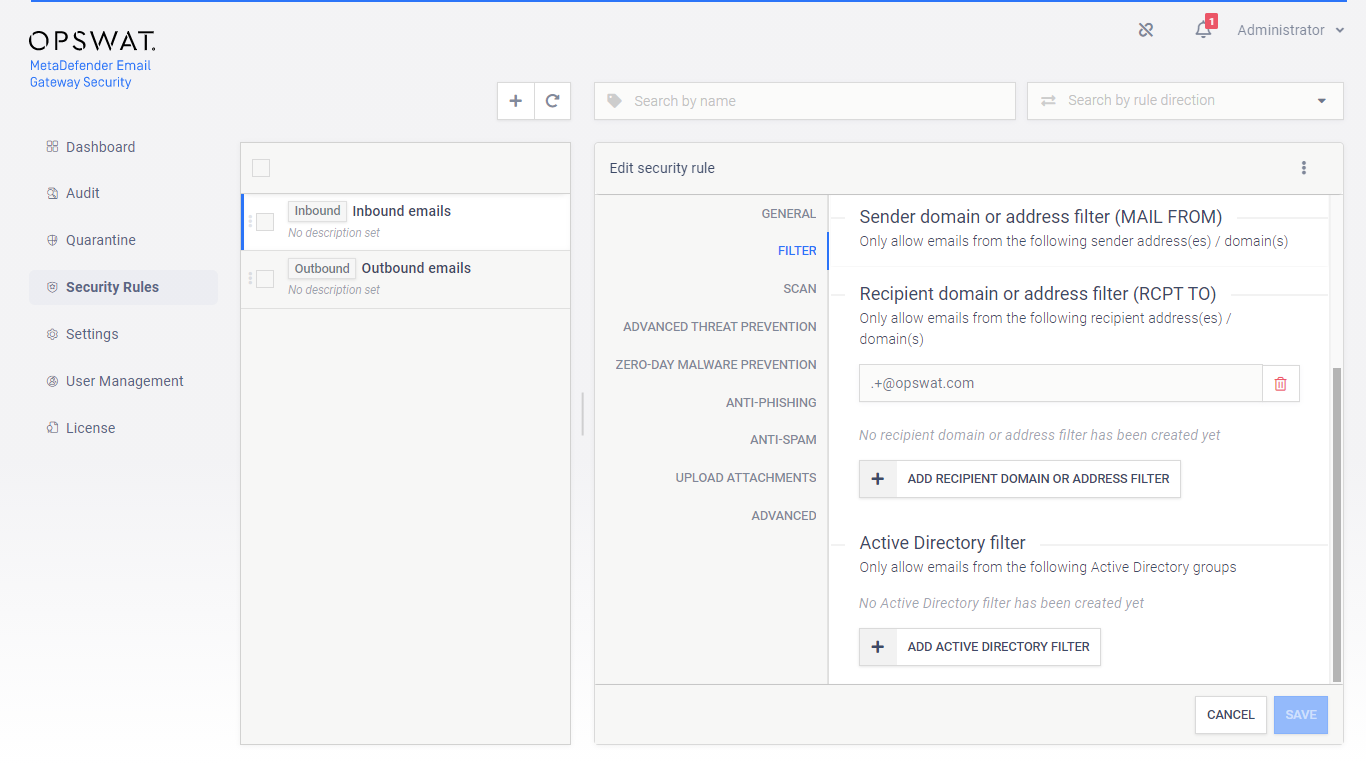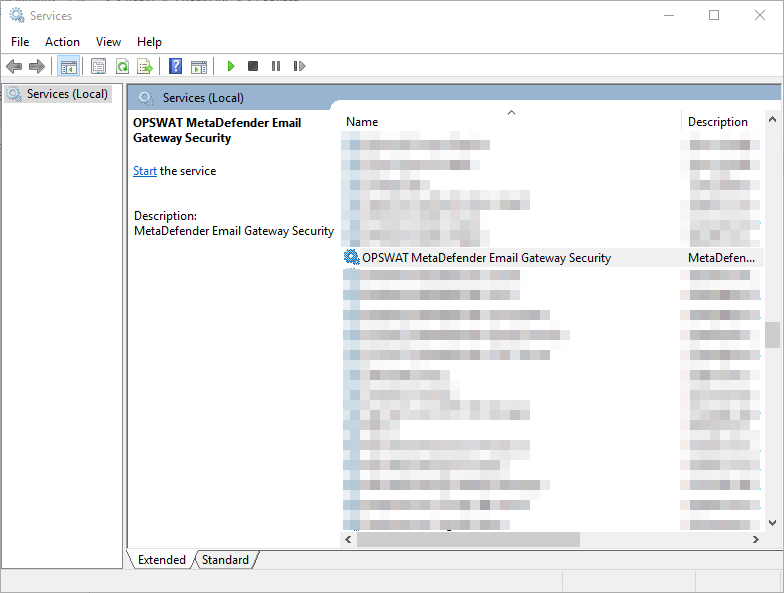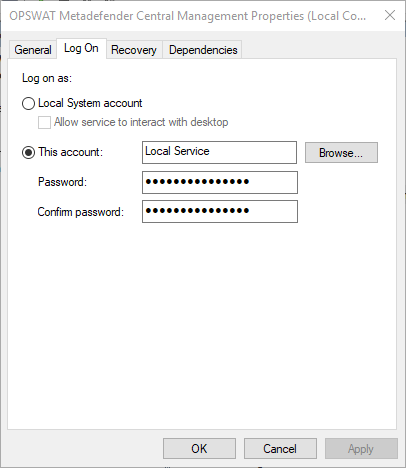4.11. Hardening
Sign notifications sent by the product
Enable digitally signing alert, notification and report emails sent by the product so that end-recipients can trust the authenticity of these system messages.
For details how to enable S/MIME signing of these emails see 4.8. Alert, notification and quarantine report emails.
Networking
Transport Layer Security
No TLS by default
By default TLS is not enabled for none of the web management console port, public rescan port and SMTP port. It is also disabled for outbound connections towards MetaDefender Core and Metadefender Vault (HTTP), Active Directory (LDAP) or SMTP services (SMTP).
To enable TLS, follow the instructions in 4.2. Transport Layer Security.
TLS versions
Verify that old versions of SSL and TLS protocols are disabled, such as SSLv2, SSLv3, or TLS 1.0 and TLS 1.1. The latest version of TLS should be the preferred. For details see 4.2. Transport Layer Security.
No options for TLS clients
When Email Gateway Security acts as a client (connection to Core, Active Directory or an SMTP service), then there is currently no way to configure the preferred TLS versions on the client side.
TLSv1.3 is not supported
For compatibility reasons, TLSv1.3 is currently not supported by Email Gateway Security.
Cipher suites
Verify that the strongest algorithms and cipher suites are set as preferred.
Reasonable defaults
By default Email Gateway Security comes with the following cipher configuration: ssl_ciphers HIGH:!aNULL:!MD5;.
Cipher suites can be customized in the following way:
-
Create a configuration file under your installation folder’s nginx directory (default C:\Program Files\OPSWAT\MetaDefender Email Security\nginx). The extension must be *.conf.
copy con"C:\Program Files\OPSWAT\MetaDefender Email Security\nginx\cipher.conf" -
Add the desired cipher config as a single line entry as the ssl_ciphers directive
ssl_ciphers TLS_AES_128_GCM_SHA256:TLS_AES_256_GCM_SHA384:TLS_CHACHA20_POLY1305_SHA256; -
Restart the Email Gateway Security service
net stop mdemailsecuritynet start mdemailsecurity
Recommended settings
As vulnerabilities in protocols and ciphers are continuously discovered, we recommend to keep the cipher configuration up-to-date.
For the same reason we recommend using a trusted service (e.g. https://wiki.mozilla.org/Security/Server_Side_TLS) to define the secure cipher configuration.
No options for TLS clients
When Email Gateway Security acts as a client (connection to Core, Vault, Active Directory or an SMTP service), then there is currently no way to configure the preferred TLS cipher suites on the client side.
Restrict web management port
Email Gateway Security provides the option to configure the web management console and the public rescan page to separate ports. For details see 4.1. Registry configuration.
Shared port by default
By default the web management console and the public rescan page are configured to the same port (restport, see 4.1. Registry configuration).
Separating the web management console and the public rescan page to different ports makes it possible to restrict the web management console to be accessible from a management network only, while keeping the public rescan page available even from the internet. For details see 4.1. Registry configuration.

Open relay
An open mail relay is a Simple Mail Transfer Protocol (SMTP) server configured in such a way that it allows anyone on the Internet to send email through it, not just mail destined to or originating from known users. This used to be the default, but open mail relays have become unpopular because of their exploitation by spammers and worms. Many relays were closed, or were placed on blacklists by other servers. [https://en.wikipedia.org/wiki/Open_mail_relay]
By processing mail that is neither for nor from a local user, an open relay makes it possible for an unscrupulous sender to route large volumes of spam and/or spread malware. In effect, the owner of the server - who is typically unaware of the problem - donates network and computer resources to the sender's purpose. Moreover, open mail relays are often blacklisted as soon as they’re discovered, and email originating from these servers are marked as spam. [https://www.acunetix.com/vulnerabilities/web/smtp-open-mail-relay]
Email Gateway Security can be configured to filter email for certain email addresses and domains. For details see 4.4. Policy.

Accounts
Changing the default password
After installation of versions pre 4.3.0, a default user account was created with a predefined password. This user may still exist in a post 4.3.0 version, if it was upgraded from an earlier version.
Change this predefined legacy password as soon as possible, following these steps:
-
Log in using the legacy default user account's name and password ( admin / admin ),
-
Change the password of the account as described in 4.5. Users.
Enhanced password policy
For Local type user directories Email Gateway Security provides enhanced password policy. The enhanced password policy provides higher level of security for passwords then the default password policy.
Off by default
The enhanced password policy is disabled by default for Local type user directories.
To enable enhanced password policy for a Local type user directory, follow the instructions in 4.5. Users.
Running the service as an unprivileged account
Default service account
By default the mdemailsecurity (OPSWAT Metadefender Email Gateway Security) service is running as the privileged Local System account.
To run the Windows service as another Windows account (we will use the Local Service account as an example below) follow these steps:
-
Grant read and write permissions to the target account for the installation folder (default C:\Program Files\OPSWAT\MetaDefender Email Security) all its subdirectories and all other external files and folders that are configured to be read and written by the Email Gateway Security service (e.g.: logfile Windows Registry entry).
-
Stop the OPSWAT Metadefender Email Gateway Security
> net stop mdemailsecurity -
Open the Administrative Tools > Services window on your Windows server.

-
Right click the OPSWAT Metadefender Email Gateway Security entry and select the Properties > Log On dialog.
-
Change the service user account to the target user account.

-
Start the OPSWAT Metadefender Email Gateway Security service
> net start mdemailsecurity
Unused accounts
Delete unused local accounts
User accounts in Local type user directories must be deleted manually if they are not needed any more.
AD or LDAP accounts
User accounts from Active Directory or LDAP type user directories can not access the web management console after they have been removed from the directory service.
Components
Email Gateway Security
Always upgrade to the latest published version of the product that is available on https://portal.opswat.com/products/metadefender-email-security.
MetaDefender Core and engines
Standalone only
This section applies to Email Gateway Security standalone edition only. For details see 1. Licensing.
Always use the recommended versions of MetaDefender Core and the engines. For details see 3.1. Prerequisites.
OpenSSL
Always upgrade to the latest published version of OpenSSL. For details see 3.1. Prerequisites.
Microsoft .NET
Always upgrade to the latest published version of the Microsoft .NET Framework. For details see 3.1. Prerequisites.